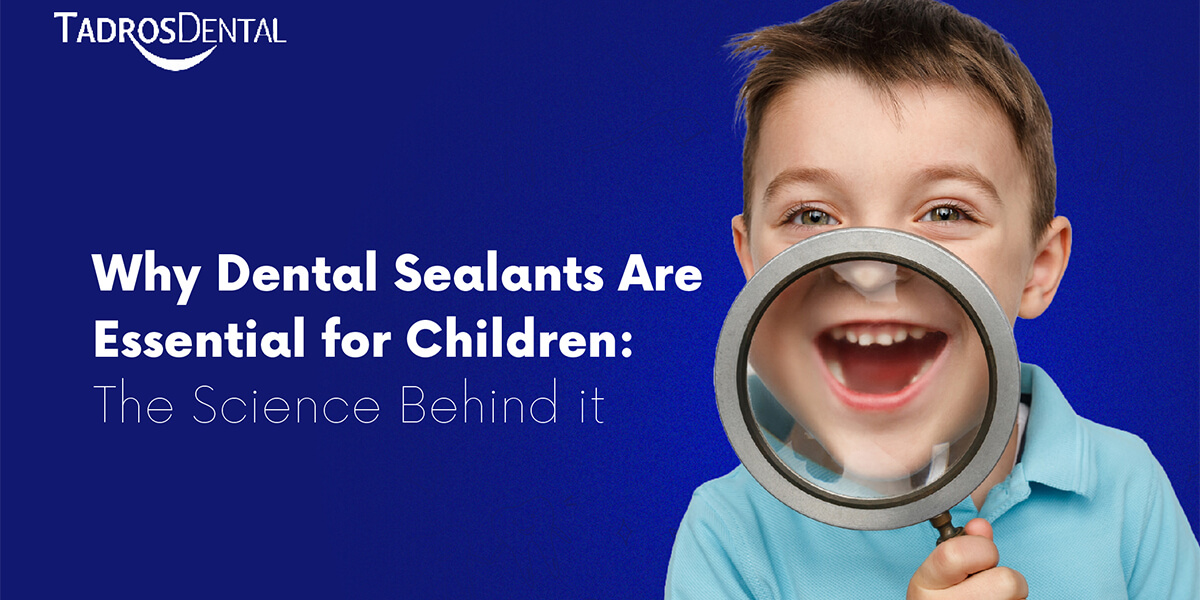
Parenthood demands ongoing care, with prevention being more effective than cure regarding children's dental health.
The use of dental sealants for children stands out as one of the most efficient preventive treatments, which many people fail to recognize for children. The thin protective dental coatings introduced in pediatric dentistry provide doctors with an easy solution to address complex dental health issues.
Sealants are coating materials that are thin and are applied onto the chewing surfaces of posterior teeth such as premolars and molars by dentists. The design of molars and premolars features natural crevasses that serve as food particles and bacterial hiding spots and thus create dangerous decay opportunities. Sealants create an effective protective layer that blocks food and plaque from reaching the tight areas in teeth.
Think of dental sealants as protective raincoated surfaces for the teeth of children. Dental sealants appear clear to slightly tinted plastic materials, which dentists apply directly to back teeth chewing surfaces. Children find it challenging to clean effectively with conventional brushing methods due to the natural pits and grooves that food particles and bacteria choose to hide in these areas on tooth surfaces.
Nine out of ten cavities developing in school-aged children appear within their toothpicks and crevices. Knowing how to dry every tooth area remains challenging for children; thus, their back teeth stay at increased risk. The cavity rate for school-age children who lack sealants exceeds that of children with them by almost 200 percent. Sealing vulnerable parts of teeth through dental sealants both decreases decay risk and simplifies tooth cleaning routines for children
A physical barrier emerges from the magic of dental sealants, which protects teeth effectively. The microscopic grooves of the teeth become filled by liquid sealants that rapidly harden into a protective shield guard against harmful bacteria.
This simple but effective mechanism has shown remarkable results in preventing tooth decay, with studies showing that sealant benefits include reducing cavity risk by up to 80% in the first two years after application.
Why Children Need Dental Sealants
The early years of childhood are crucial for establishing good dental health habits, but let's face it – kids aren't exactly known for their meticulous brushing techniques. Here's why sealants make perfect sense for young ones:
Vulnerable Years
Newly emerged permanent molars in children make them highly prone to developing decay. The first molars appear in children at age six, followed by the emergence of the second molars at age twelve. The enamel remains weak during particular developmental phases because it has not fully matured, making teeth more exposed to bacteria that cause cavities.
Eating Habits and Lifestyle
All children develop an undeniable attraction for their sweet snacks. Regular dental hygiene practices cannot prevent food residue from entering the grooved surfaces deep within the back teeth. Applying dental sealants for children protects teeth susceptible to cavities during this period.
The Application Process
Dental sealants are one of dentistry's easiest procedures because of their straightforward application method. Parents and their children should understand the following facts about dental sealants.
A patient needs only minutes to complete each tooth application, during which no drilling or structure elimination happens, and the procedure remains entirely comfortable and painless. The easy treatment procedure makes dental sealants suitable as a preventative intervention for children who feel stressed before dental appointments.
Long-Term Benefits and Cost-Effectiveness
Sealant benefits include noteworthy advantages that extend throughout the long-term duration:
The sealant application expense remains lower than the costs associated with cavity treatment. A filled cavity costs more money with additional treatment demands that include:
The lifespan of dental sealants extends to various years when patients provide suitable maintenance to their teeth. The dentist examines dental sealants during regular appointments to determine their condition before providing repair or replacement services if required.
The correct timing plays an essential role in getting sealants properly applied. The American Dental Association recommends:
Sealants are an important prevention tool but constitute only one component of a wider strategy to enhance children's dental health. They work best when combined with:
If you're considering dental sealants for your child, here's what to do:
Testing for early sealant use can save time and money and prevent pain later. Dental shield devices provide clear protection for children's teeth and can last many years.


Privacy Policy | Powered by Capline, a Top-Rated Solutions Provider for Dental Offices.